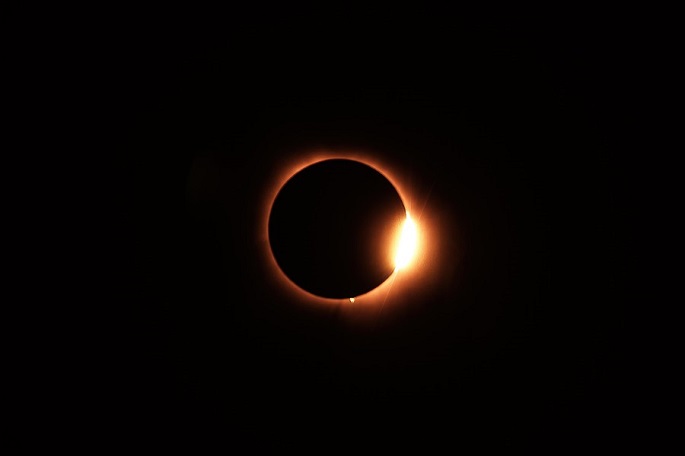Total solar eclipse thrills tens of millions across North America
Published : 09 Apr 2024, 03:57
Updated : 09 Apr 2024, 04:04
Tens of millions of spectators were treated to stunning views as a rare total solar eclipse swept across North America on Monday.
The total solar eclipse -- nicknamed the Great American Eclipse for its long path over North America -- was visible in the sky over parts of Mexico, 15 U.S. states and eastern Canada.
The Mexican city of Mazatlán was the first place to see the total solar eclipse as it emerged over the Pacific Ocean.
Totality reached Mazatlán at 11:07 a.m. Pacific Time Monday, and lasted for a little more than four minutes.
The path of the eclipse continued from Mexico, entering the United States in Texas, and traveling through Oklahoma, Arkansas, Missouri, Illinois, Kentucky, Indiana, Ohio, Pennsylvania, New York, Vermont, New Hampshire, and Maine. Small parts of Tennessee and Michigan could also experience the total solar eclipse, according to NASA.
Cities in the state of Maine were the last locations in the United States to experience total solar eclipse, according to NASA live broadcast.
The eclipse later entered Canada in Southern Ontario, and continued through Quebec, New Brunswick, Prince Edward Island, and Cape Breton. The eclipse exited continental North America on the Atlantic coast of Newfoundland, Canada, at 5:16 p.m. Newfoundland Daylight Time, according to NASA.
Most places along the path of total solar eclipse saw a totality duration between 3.5 and 4 minutes. The longest duration of totality was 4 minutes and 28 seconds, near Torreón, Mexico, according to NASA.
An estimated 31.6 million people in the United States live in the path of totality this year. An additional 150 million people live within 200 miles of the path of totality, said NASA.
Crowds at different locations let out loud screams in excitement as they saw the moon blocked the sun. Though some places had clouds blocking the full view, people still got excited and cheered as nighttime descended in the middle of the day for a brief moment.
In cloudy Houston, Texas, which is not on the path of totality, a number of museums held events to help people enjoy a partial eclipse with the moon blocking 94 percent of the sun.
A crush of eclipse tourism had reportedly attracted more than 1 million people to visit Texas for experiencing a total solar eclipse, state officials said.
Preparations for Monday's total solar eclipse had been underway for months, with numerous cities and states within the path of totality declaring states of emergency, issuing disaster declarations and closing down schools and municipal buildings for safety reasons.
A total solar eclipse happens when the Moon passes between the Sun and Earth, completely blocking the face of the Sun. The sky will darken as if it were dawn or dusk.
The Earth sees two to three solar eclipses of all kinds each year, and about two total solar eclipses every three years, according to NASA.
On average, a total solar eclipse passes by a given point on Earth once every 375 years, according to celestial mechanics.
Monday's total solar eclipse also offered scientists precious opportunities to study the eclipse's impact on Earth's atmosphere, animal behaviors, as well as the Sun's outer atmosphere, called the corona.
Using NASA's WB-57 high-altitude research aircraft, one project planned to capture images of the eclipse from an altitude of 50,000 feet above Earth's surface. By taking images above the majority of Earth's atmosphere, the team hoped to be able to see new details of structures in the middle and lower corona.
The observations, taken with a camera that images in infrared and visible light at high resolution and high speed, could also help study a dust ring around the Sun and search for asteroids that may orbit near the Sun.
The WB-57 aircraft also carried instruments to learn more about the temperature and chemical composition of the corona and coronal mass ejections, or large bursts of solar material, according to NASA.
After Monday's total solar eclipse, the next total solar eclipse that can be seen from the contiguous United States will be on Aug. 23, 2044, according to NASA.


